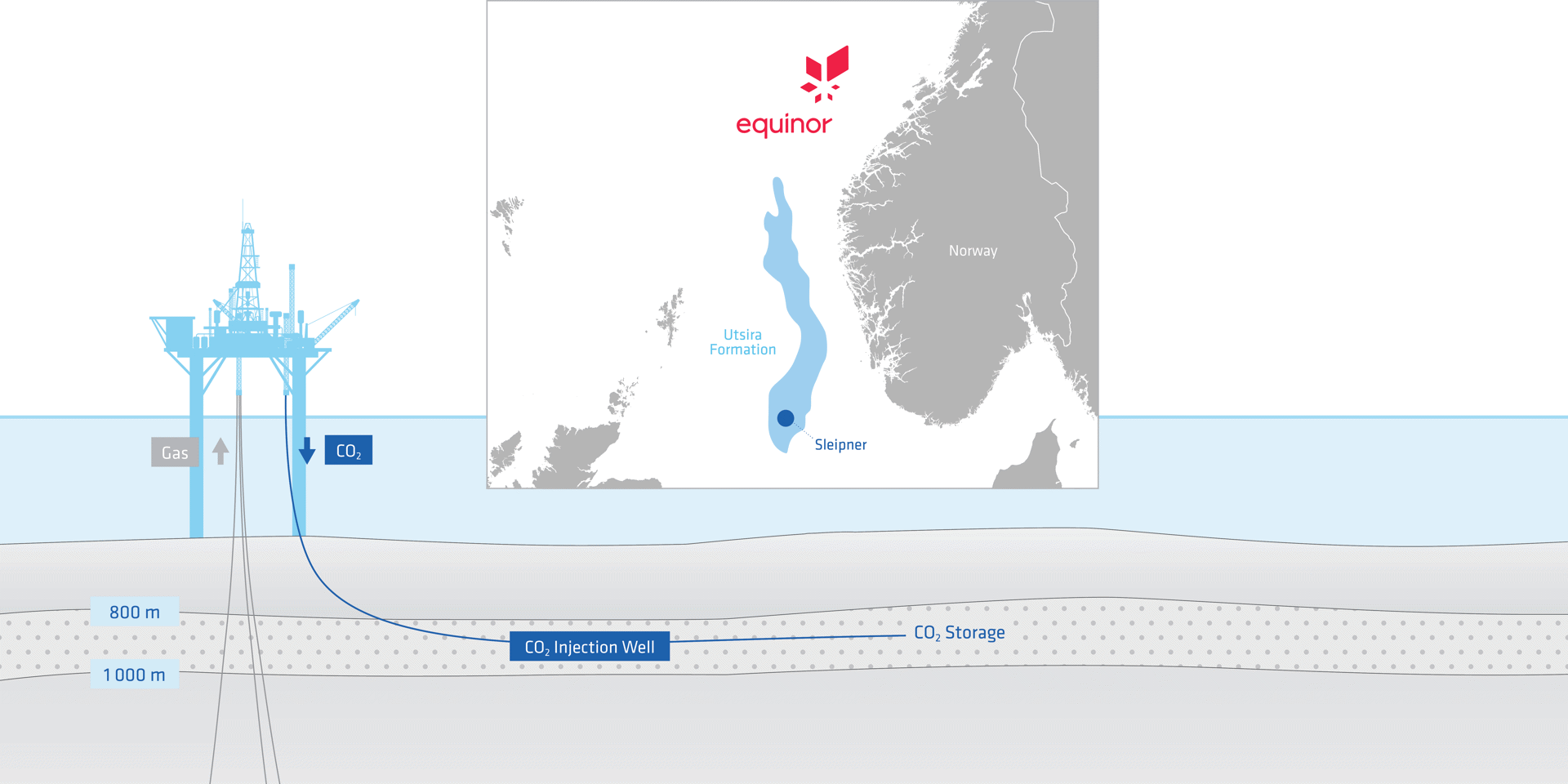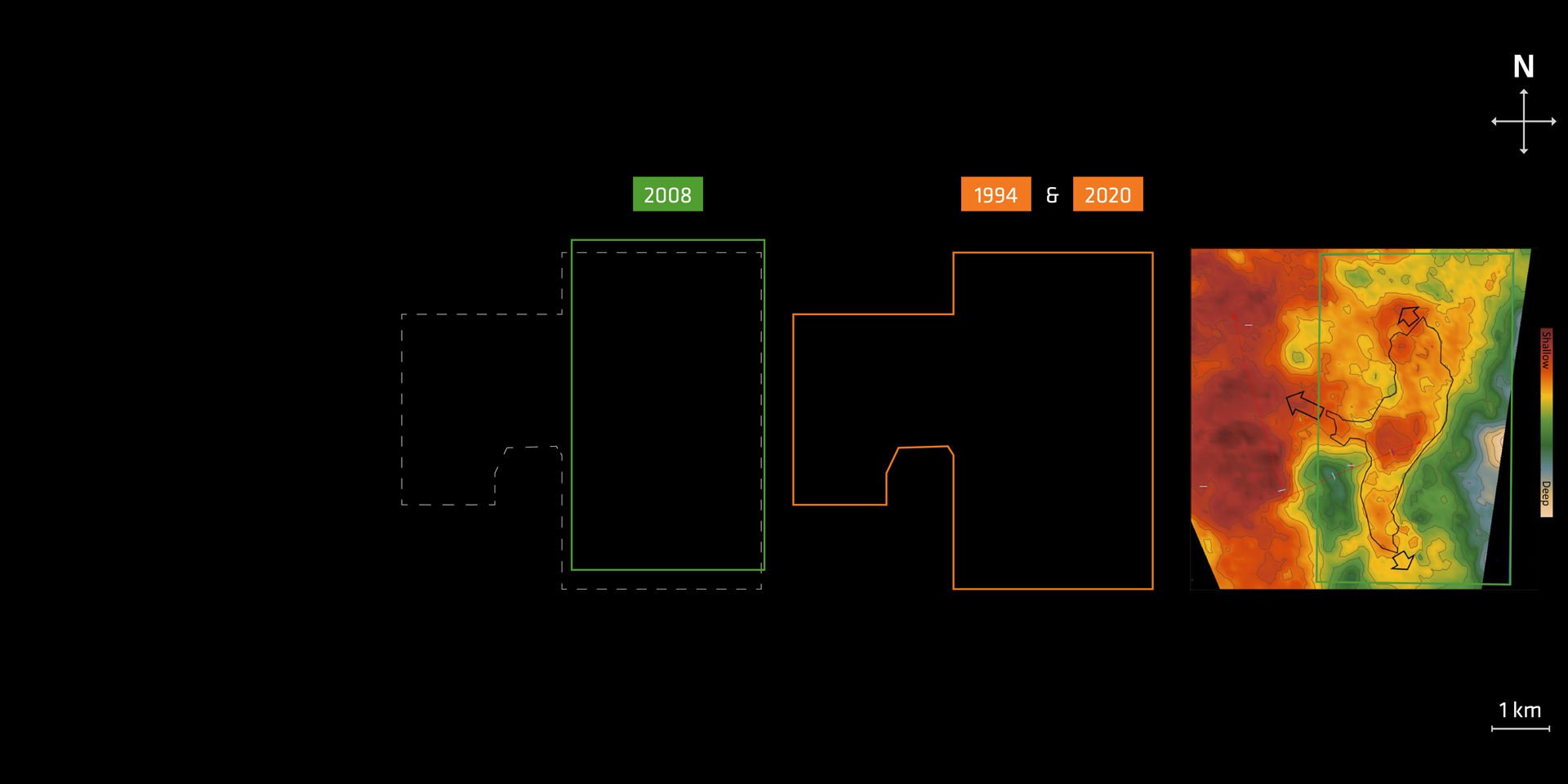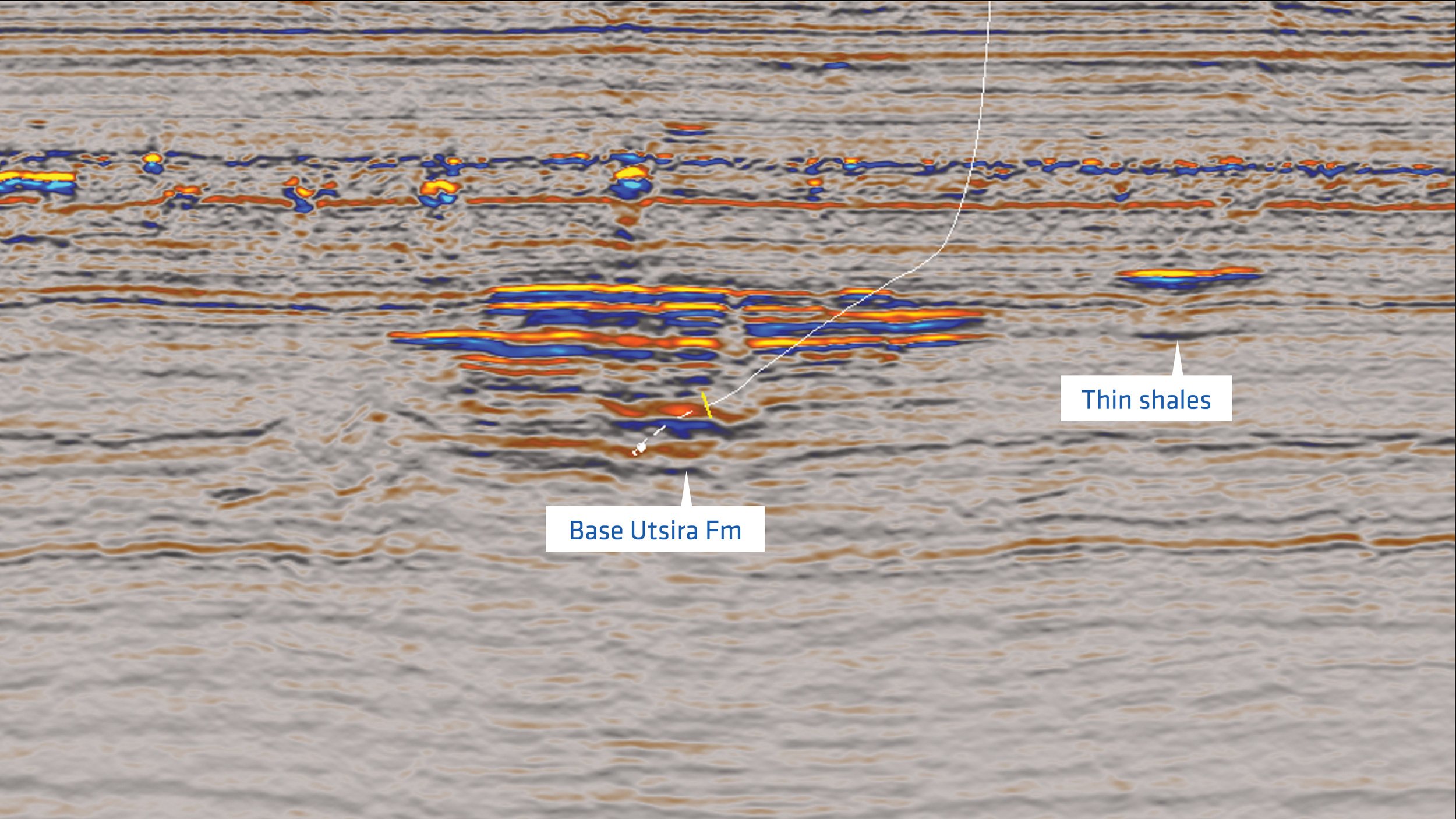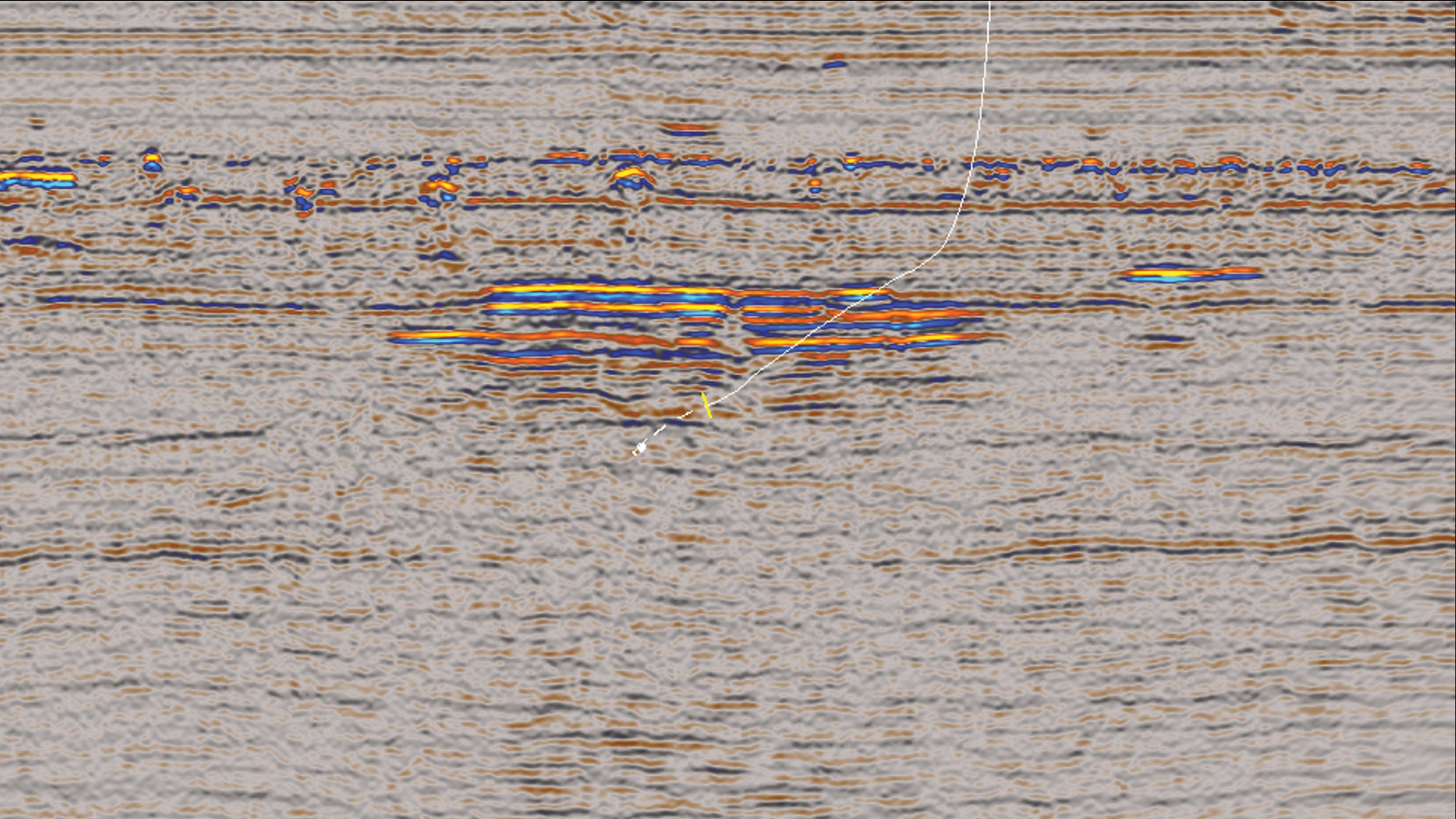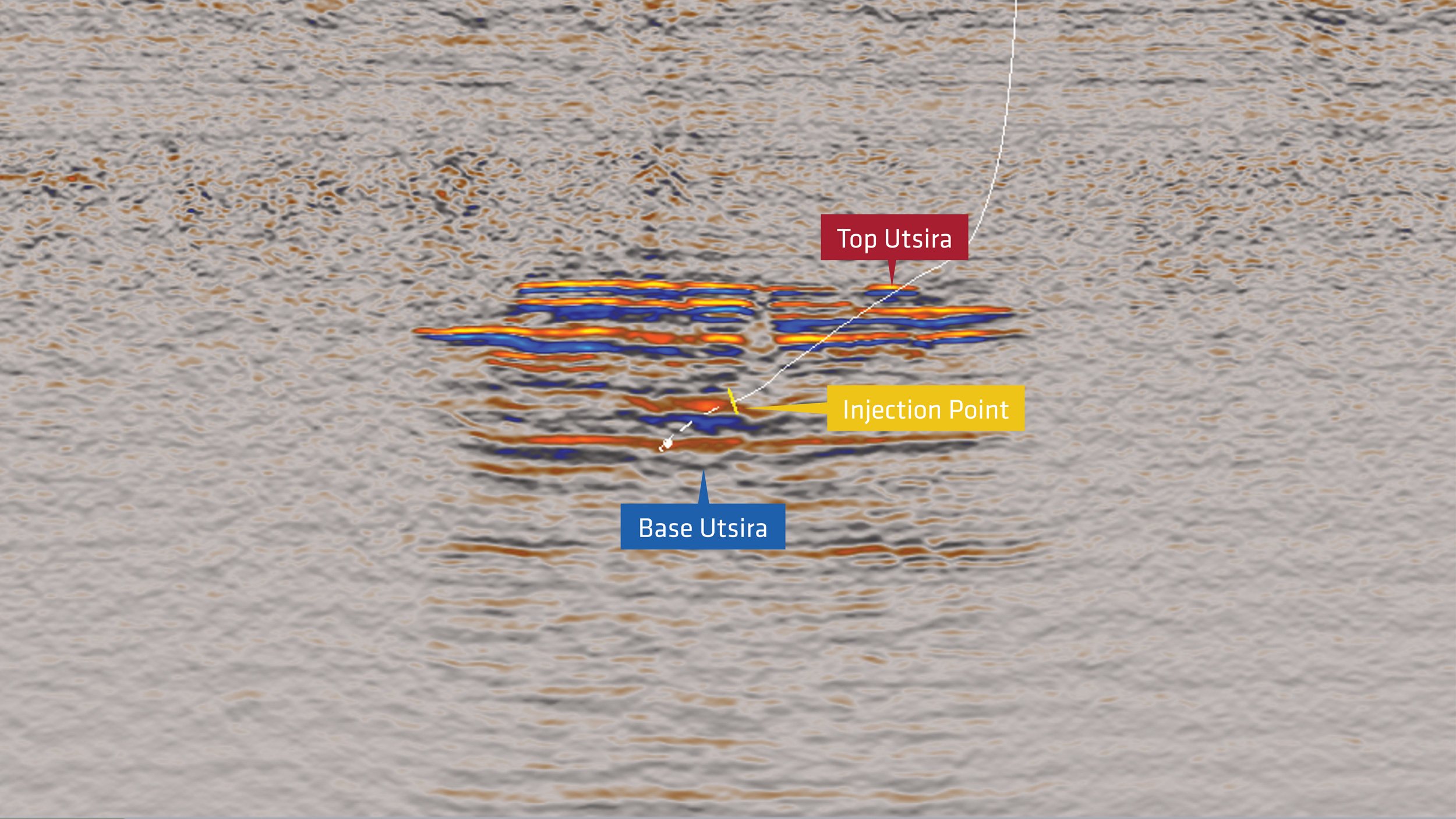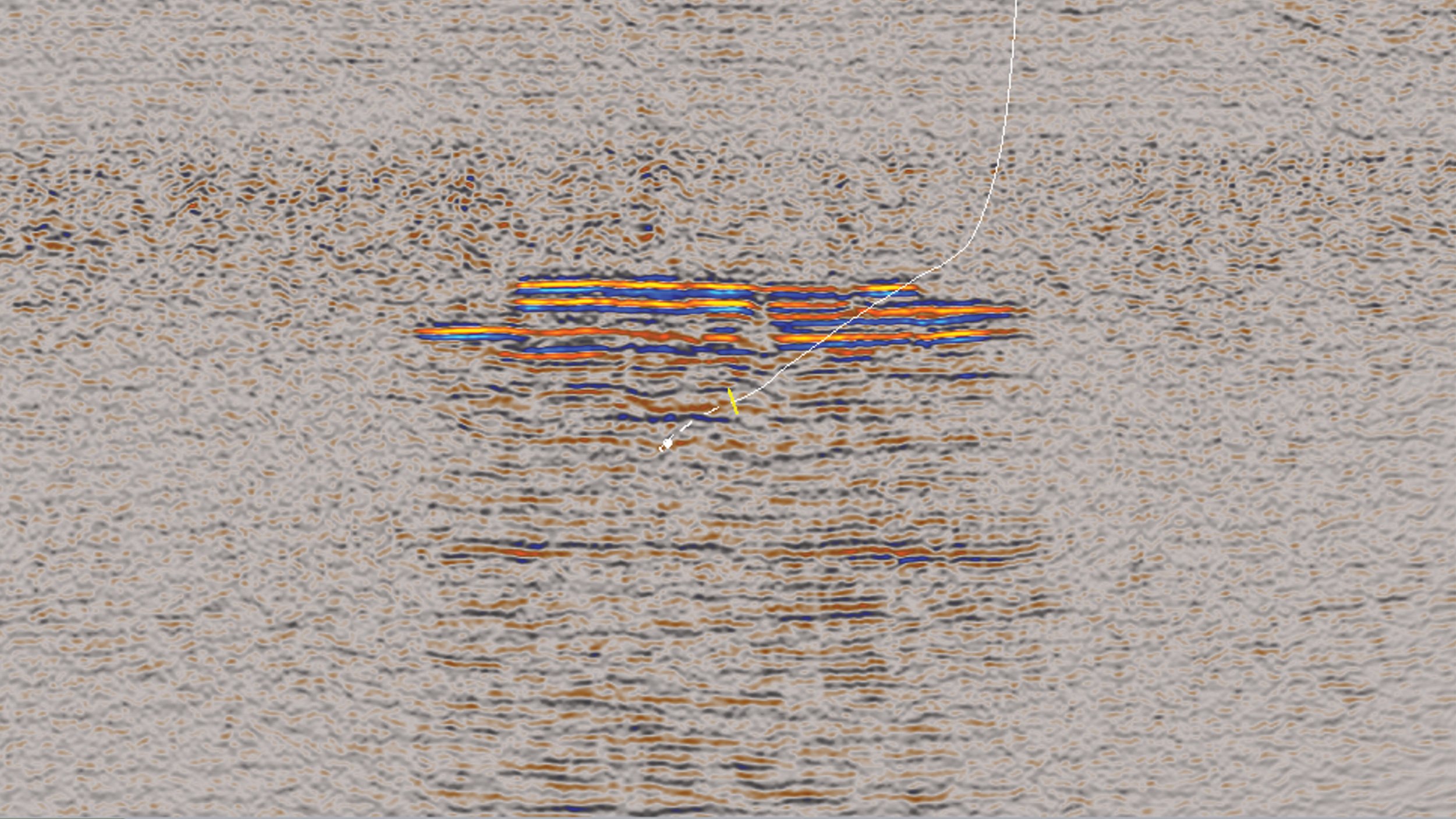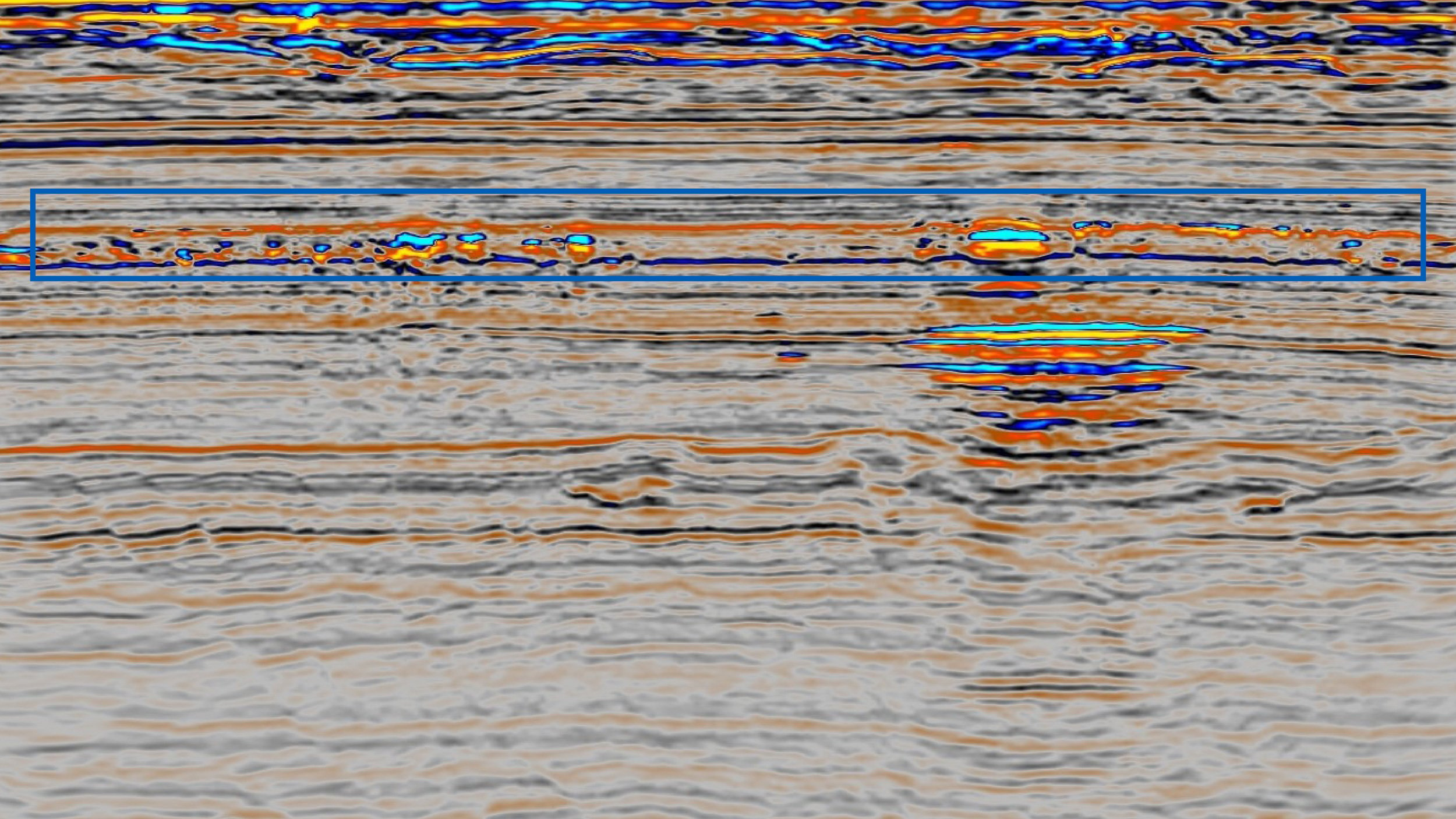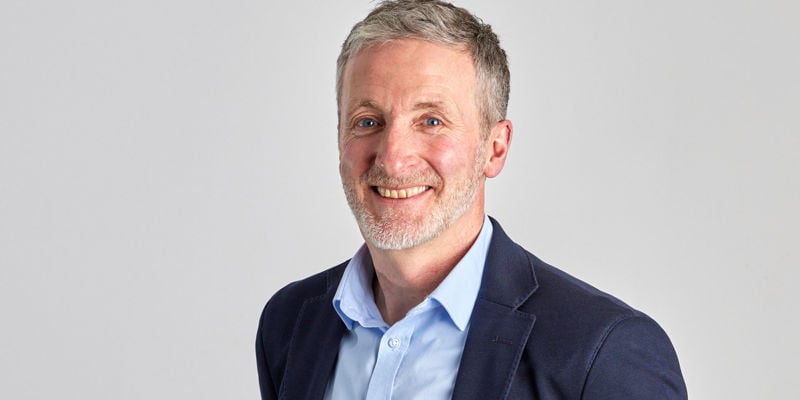Challenge
CO2 stored at Sleipner accumulates at the top of the Utsira Formation and beneath the thin shales within it. On vintage seismic data, it was difficult to predict the growth and migration of the CO2 plume, as the base and the structure within the Utsira Formation were almost invisible. The lateral migration of CO2 increased by up to 200-300 m from 2016 (white polygon) to 2020 (pink) with growth in the north, south, and west.

